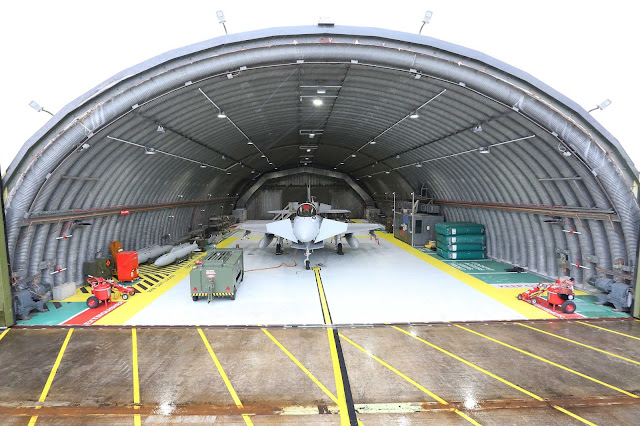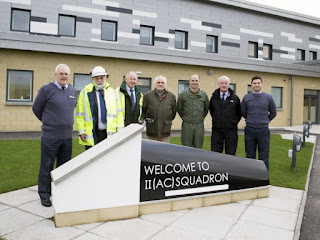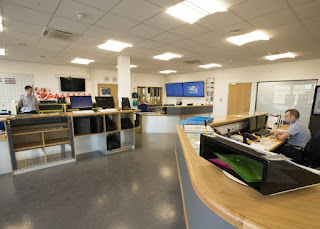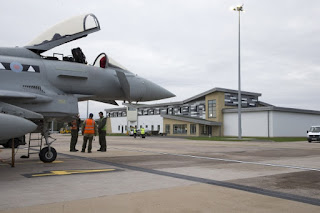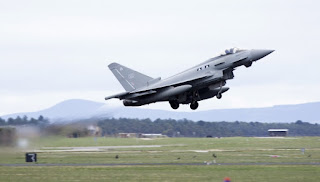Archive for January 2017
27
LED helps to make RAF more environmentally friendly
Comments off · Posted by admin in LED, LED panels
Despite facing severe budget restraints, a project has been delivered that is both energy efficient and sustainable and the RAF’s decision to use LED lighting, for one of first times on a new project, played an important role.
The building has been so well received within the defence community that it has been awarded the Ministry of Defence’s prestigious Sanctuary Award for Sustainability.
RAF Lossiemouth often bears the brunt of the West’s increasingly fractious relationship with Russia, with RAF Typhoon fighters being dispatched from the base on a regular basis to intercept Russian aircraft, which often play cat and mouse with Britain’s air defences. This means the base is constantly in use.
Sustainability was put at the heart of the project and energy efficiency was key. The new building and the refurbishment of the older buildings also had to be completed in a robust fashion, so as to ensure long, low-cost use.
In order achieve these aims, LED was quickly considered and pitched.
‘There were a number compelling reasons to change the lighting in the older facilities, principally because the buildings involved are used by the squadron 24 hours a day. But like any project that involves spending public money, it had to be justified,’ commented senior project manager at the Defence Infrastructure Organisation, Jim Ellistone , who worked on the project.
The new building would have a number of uses, requiring different levels of lighting. Besides the executive and administrative offices, the new headquarters building would provide a state of the art secure facility that would be used to plan and brief complex flying operations.
The building would also accommodates the Squadron’s engineering and logistics facilities and the Survival Equipment Section, which maintains all of the high tech equipment worn by Typhoon pilots during flight.
‘Everyone involved in the process quickly recognised the benefits of new lighting, the figures showed that, due to energy savings, the project would pay for itself in just over four years,’ Ellistone added.
In defence projects, the cheapest capital option is often used, due to the budget constraints that the MoD is placed under by the government of the day, however the benefits of LED were quickly provable to authorities.
‘This was an easy change to sell and was, in many ways, like pushing on an open door. The benefits of LED are now well established and we knew that a case for the technology had to be put forward at the first planning stage,’ Ellistone commented.
The highly intricate work that RAF engineers have to carry out on the Typhoon fighters, which are some of the RAF’s newest and most agile aircraft, means that excellent light quality is required. Such is the 24-hour nature of the base, repairs could be needed any time during the the day and night.
The aircraft are stored under concrete Cold War era Hardened Aircraft Shelters (HAS), which had not been internally upgraded since the days of Ronald Reagan and Mikhail Gorbachev. Energy efficient LEDs, offering the necessary light levels were installed as replacements to older models. LEDs were also used in the lines on the base’s concrete floor, which the aircraft use as guidance when they pull forward.
‘We had to be careful when specifying fixtures for the HAS, when the jet engines run in the hangers, fumes come from the wings and rise upwards,’ Ellistone said of the work. ‘We had to make sure, in these circumstances that the lights did not melt.’
The main squadron headquarters were delivered a month early, with a saving on the original tender target price of more than £1 million.
In reviewing the project on completion, the Combined Project Delivery Team came to the conclusion that a ‘real and deep sustainability gain’ was made by ‘stepping back’ to look at the fundamentals of what they were being asked to do.
This project is an example of reasoned arguments being used to build up a case for change and then, in timely fashion, a sustainable solution being agreed and delivered on time and within budget.
Visit www.novelenergylighting.com to explore our range of office and warehouse LED lighting, or call us today: 0208-540-8287
led hanger lighting · led high bays · led lighting · led office lighting · led panels · led tubes · led warehouse lighting · Novel Energy Lighting
Scientist who discovered human centric lighting shares tips with Lux. PLUS: Lighting based indoor positioning set to revolutionise US stores. AND: Health fears makes city think twice about LED. Lux Today 24 January 2017
human centric lighting · led office lighting · led panels · led tubes · lifi · light positioning · Novel Energy Lighting
12
Lighting industry needs to ‘wake up’ to IoT hack threat
Comments off · Posted by admin in LED
 |
| Ken Munro, the UK’s leading ‘ethical hacker’ speaking at this year’s LuxLive |
connected home technologies · connected lighting · internet of things · iot · iot security · led lighting · Novel Energy Lighting · trojan horse

